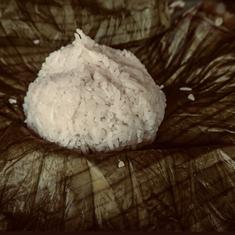There can never be a single person who fits the bill of the perfect Mohammed Ali Road-during-Ramzan food junkie. The description has too many layers and baffling nuances, understanding which is important even before you can qualify to put up Facebook posts with a malpua in the background. Let this, then, be a guide to setting you on the path to Mumbai foodie heaven.
For starters, you need to be dedicated. Mohammed Ali Road is a busy, chaotic, wholesale marketplace where sounds get amplified and reflected back by the massive flyover that dwarfs it and snakes along its length. The business establishment there are old and family-run, and the ancient buildings housing the establishments are held together by common walls and the glue of a thousand collective memories. Your taxi from the nearest railway station will crawl through a sea of humanity to get here. Pedestrians take precedence in this locality, followed by pushcarts. Automobiles are insignificant flotsam.
Second, you need nerves of steel and a stomach of cast iron. At the Minara Masjid corner, you get off the main road and walk into the tiny Ibrahim Mohammed Merchant Road, where the feast awaits the faithful. Plastic tarpaulins cover the al fresco seating placed on the road cordoned off for traffic for Ramzan. The awnings are placed such that the runoff water can drip into your paya soup just as you raise it to your lips. But you cannot quibble over little things – if you are a true foodie, lack of hygiene cannot be a complaint. The stainless table tops at the roadside stalls get a desultory wiping with each new customer, and the kitchen is mercifully out of sight.
Mohammed Ali Road is no place for vegetarians. The amount of flesh on display could send the Censor Board into an apoplectic fit. Chicken, goat, quail and eggs. The meat is marinated, smeared with food colour and hung in open racks to entice. As the customer base builds up, they disappear off the racks to appear magically on your plate. Kebabs: seekh, murg, tangdi. Entrails: brain, kidney, liver, gizzard. Very little of the animal is not up for consumption in these eateries.
I have been coming to this lane for the last seven years to photograph it, and the chefs behind the enormous tawas and dekchis have not changed. They sit behind huge handis of mutton chaap and shormas, unperturbed by the commotion about them. Rumali rotis spin in the air and precisely flop over inverted cast iron domed vessels.
This gentleman’s stall at the first intersection, a prime real estate spot, is a crowd-puller. The aroma of his smoky tandoori food calls out to the faithful, who sit patiently on wooden benches waiting for the kebabs to reach perfection. A little further on, there’s a stall selling bheja masala and gurda fry that is best avoided by the faint of heart.
This, then, is the acid test for a Mohammed Ali street food lover. Will you stick to the crowd-pullers, or go boldly beyond, into the underbelly of the beast?
Having placated the cravings of the belly, attention must turn to the Temple of the Sweet Tooth. The real delights of the iftar lie in the dessert. The malpua tops the list of favourites. Deep fried and served whole drowned in rabdi, it takes four unsatiated souls to finish a single lot. Firni, served in earthenware, comes in many flavours, including mango and malai. Jalebi at this stall is made of mawa (dried whole milk) and is a speciality of the city of Burhanpur in Madhya Pradesh.
The humble malpua is elevated to an art in the hand of Mohammed Hussain, who works for Suleiman Usman Mithaiwala. He hails from a small village ahead of Gorakhpur, Uttar Pradesh, and has been working here for almost as long as he can remember. He is at the malpua station every time I visit and seems unchanged.
The iftar experience is not limited only to the gastronomical delights. Itinerant merchants carry delightful toys that glow, babble, chirp and pulsate with LED lights. It’s a time for family outings, and the festivities continue long after dinner.
















